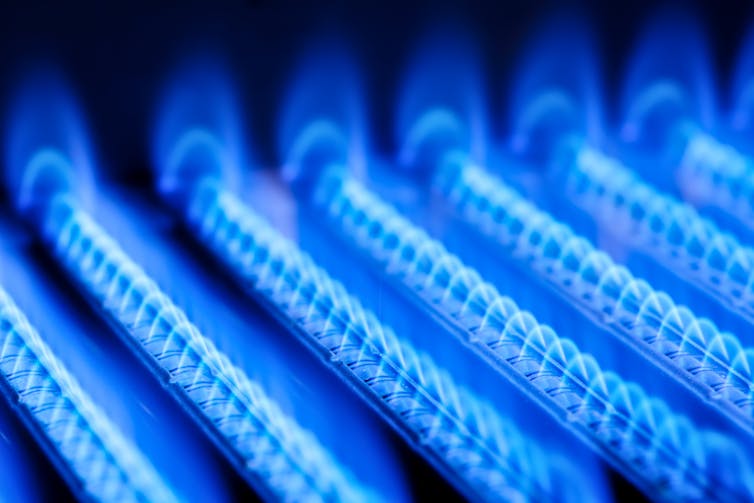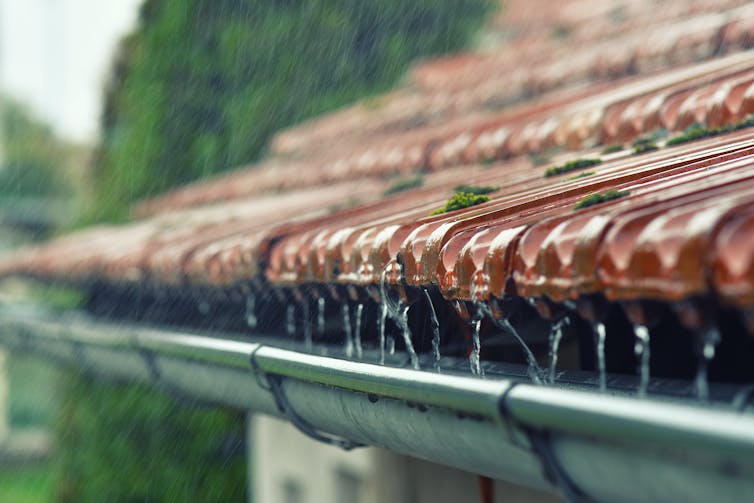
Gas-fired space heating accounts for around 720 terawatt hours (TWh) of energy consumption each year in the UK. That’s more than double the UK’s annual electricity consumption of around 350TWh. Burning all that natural gas isn’t sustainable, which is why the UK government announced in April 2019 that no new properties should be fitted with gas-fired boilers from 2025.
Of the 25 million homes in the UK, over 23 million have a gas supply for heating and cooking. That accounts for about 60 million tonnes of CO₂ emissions each year. So how could the carbon footprint of the UK’s gas network be eliminated?

Gas or electric?
One approach is to transform a network based on natural gas into one that uses hydrogen. The H21 project aims to swap out the methane burners in gas appliances, such as boilers, hobs and ovens, for hydrogen burners across the city of Leeds, to demonstrate that such a network is possible.
Even though hydrogen is the most abundant element in the universe, generating hydrogen gas that can power a boiler isn’t that simple. One option is to use electricity to split the water molecules to produce hydrogen gas. With (expensive) solid-oxide fuel cells (SOFCs), this process can be up to 92% efficient. With affordable proton-exchange membrane (PEM) fuel cells, the figure is more like 75%. Either way, for every 1,000 joules of electricity used to make hydrogen, less than 920 joules can be released by burning it.
An alternative to burning fuels to heat homes is to use electricity. Electricity can be converted directly to heat with 100% efficiency using cheap resistive elements – the same parts that are present in fan heaters and oil-filled radiators. With this, every terawatt hour (TWh) that’s currently provided by gas heating could be replaced by exactly one TWh of electrical heating. Sounds ideal, but this would require huge upgrades to the electrical grid that are unrealistic in the few decades that we have to achieve decarbonisation.
Read more: Despite good progress, 100% low-carbon energy is still a long way off for the UK
Heat pumps are a better idea because they can typically achieve an “efficiency” of 400%. For every one kilowatt hour (kWh) of electricity used, you can get four kWh of useful heat into your house. The other 3 kWh of heat has to be drawn from somewhere.
Heat pumps use electricity to extract the input heat from a nearby river or stream, from the ground or from the air itself. This is known as the “cold source”. The process of extracting heat works similarly to how refrigerators remove heat from the food that’s put into them. Few properties have convenient access to flowing water outside and ground-sourced heat pumps need water to be circulated through a closed loop well below the ground surface. The loop can be installed vertically in a borehole or spread horizontally beneath a garden, but retrofitting these on homes is difficult.

A green (and blue) heating system
There is another alternative. Rather than delivering natural gas to homes, the gas network would deliver water from which domestic heat pumps could extract heat. Water is, after all, never scarce in the UK at the coldest times of year. A house could take in water, extract heat from the water so that it forms ice slurry and dump the slurry down the drain where it would melt again. On the coldest days in winter, the average UK home uses up about 160 kWh of heating energy each day – equivalent to having two big electric kettles turned on continuously.
By slightly modifying existing heat pumps, you could extract 120 kWh of heat in a day from cold water by making about one 1.35 tonnes (1,350 kg) of ice slurry. A further 40 Wh of electricity put into the special heat pump would make up the required total of 160 kWh of heat. As housing insulation standards improve, this number will reduce.
Instead of using drinking water, water drawn from rivers and collected rainwater runoff could be distributed through the existing gas network to houses. That water would be stored in tanks at convenient points in the network, and could also replace the drinking water that’s currently used to flush toilets. Some of the water turned into ice slurry could be the “grey water” from the house itself – the outflows from showers, baths, dishwashers and washing machines.
But would Britain’s gas network be up to the task of transporting water? The flow rates needed for this to work aren’t high. Making even two tonnes of ice slurry per day requires a steady flow of less than 25ml each second. It would take 30 seconds to fill a wine bottle at that rate. The pipes used for gas supply are at least 22mm wide. In these, the average water velocity for a flow of 25ml per second would be less than 75mm per second – about one-twentieth of a normal walking pace.
The drainage system should have little trouble accommodating this either. The extra water burden of a renovated gas network is still much smaller than what might fall as rain on a typical day. If rain is falling, the air temperatures cannot be much below 0°C and rainwater from the house roof could itself provide much or all of the cold source.

Houses could also gather heat from the sun. Solar thermal collectors are less commonly installed than photovoltaic panels but in the future, homes could use them to gather the same amount of electricity as normal solar panels, but also collect some heat.
Perhaps the gas network that has served Britain so well for decades has a surprising future. It would be quite a turnaround to no longer heat our homes with the help of an expensive and finite fossil fuel, but with rainwater – something we’ll never run out of during the winter in the UK.

Seamus Garvey benefits from research funding from EPSRC and Innovate-UK relating to energy storage. He also conducts unrelated research work in relation to aerospace for Rolls-Royce, Safran and several smaller companies.
This article was originally published on The Conversation. Read the original article.







